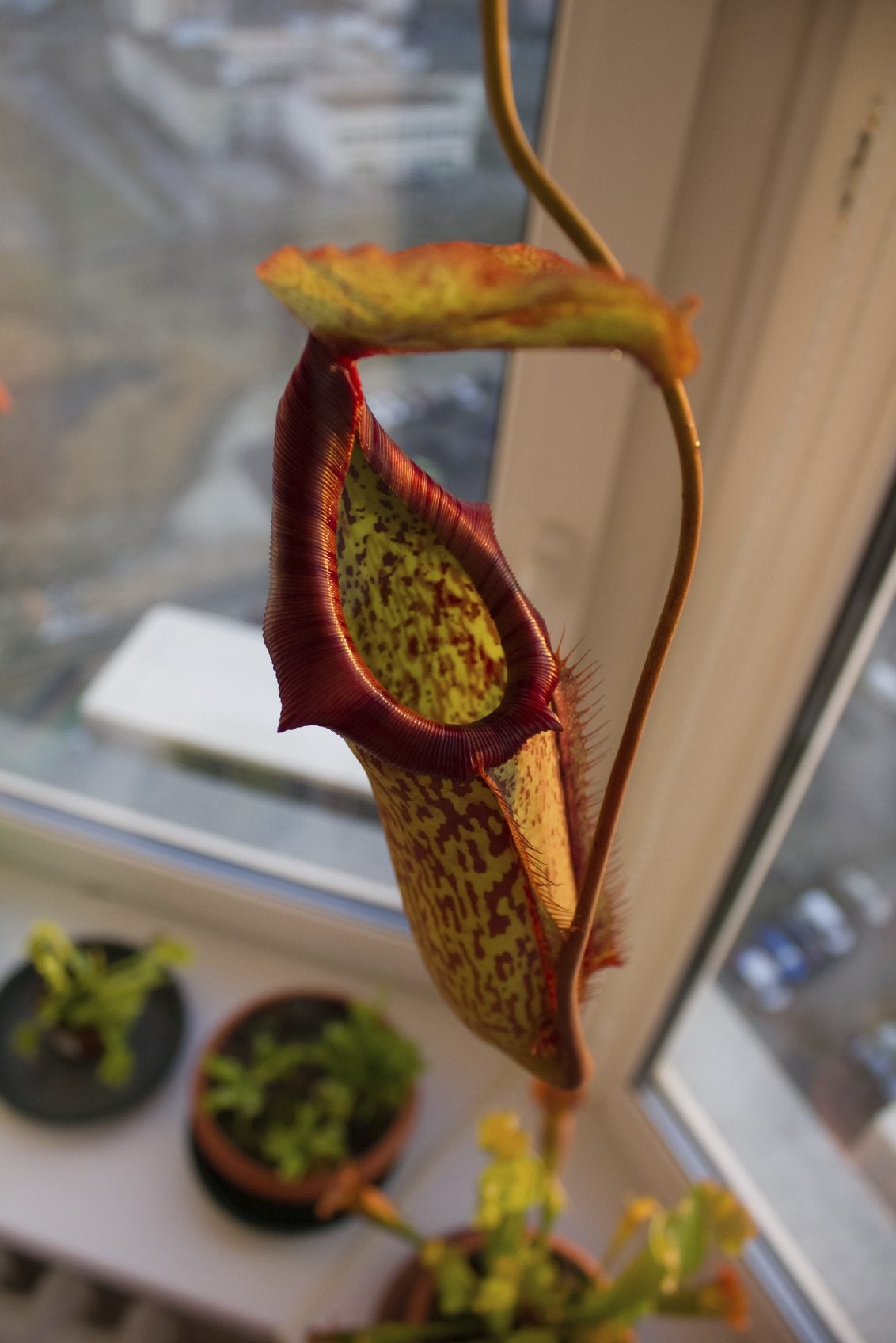Growing A Pitcher Plant Indoors: Complete Care Guide
Clean up your room's environment growing a pitcher plant indoors as a houseplant! Learn the dos and don'ts.

Growing A Pitcher Plant Indoors: Complete Care Guide
Interested in growing a pitcher plant indoors? Pitcher plants are fascinating carnivorous plants that are pitcher-shaped and are handy for trapping insects. Pitcher plant species grow in various parts of the world, including North America. Learn all about pitcher plant care indoors as a houseplant.
Can You Grow a Pitcher Plant Indoors?
Yes, you can grow pitcher plants as houseplants, but there are many different species native to different types of climates. Caring for pitcher plants indoors requires knowing the species you have and its needs. Some pitcher plants are tropical, while others come from milder climates.
Best Pitcher Plant Varieties to Grow Indoors
North American pitcher plants are generally easier to grow indoors than tropical species. Many pitcher plant species are tropical vines native to the jungles of Indonesia and Malaysia. North America is home to 15 species of pitcher plants that are smaller and simpler to maintain inside.
How to Care for a Pitcher Plant Indoors
Pitcher plant care indoors requires you to know what species you have. The needs of pitcher plants vary depending on the species and where they grow naturally. These tips work well for most North American species:
- Light Check the light needs for your particular species, but generally, pitcher plants grown indoors need full, bright light. Find a sunny spot by a window for the growing season and reduce light exposure in the winter.
- Water Pitcher plants need a lot of moisture. Never let the potting mix go totally dry. A useful strategy is to place the pot in a tray of water to a depth of about one inch (2.5 cm). Use distilled water or rainwater, never tap water.
- Temperature & Humidity North American pitcher plants are native to temperate climates and hardy only to zones 7 or 8, depending on the species. They will not tolerate indoor temperatures below 60 degrees Fahrenheit (15.5 Celsius). Some species require cooler temperatures to go dormant in winter. Most species of pitcher plants need high humidity. Growing it in a water tray helps improve humidity around a plant. You can also grow pitcher plants in a terrarium as long as they can get enough light.
- Soil Soil for pitcher plants should not be too fertile and must drain well. Soilless mixes are best. A good recipe for most species is half sphagnum mouse and half perlite or builder’s sand.
- Fertilizer Pitcher plants have low nutrient needs. If they have access to insects, they shouldn’t need any fertilizer. You can add a little dilute, high-nitrogen fertilizer to the pitchers to encourage additional pitchers to form.
Problems, Pests & Diseases
Pests should not be an issue with indoor pitcher plants. If you are bringing a pitcher plant inside from outdoors, check it carefully for thrips, mites, and other pests first.
The most common issue with growing pitcher plants is rot. They require a balance between adequate moisture and too much, which can lead to fungal disease and rot.
Pruning
Pitcher plants do not require much pruning. Remove any brown, dead, or rotting parts of the plant at any time of year.
Sign up for the Gardening Know How newsletter today and receive a free copy of our e-book "How to Grow Delicious Tomatoes".
Propagation
You can propagate pitcher plants by stem cuttings or division. Cut a stem with a few leaves and keep it in a moist potting mix with high humidity and indirect light until it grows roots. To make a division, look for a natural spot to separate a plant into two. Use a clean, sharp knife to cut through the roots.
Repotting
Look for signs your pitcher plant needs repotting, such as roots coming through the drainage holes. Choose a new container that is just a little bigger. Repot it in early spring before new growth appears.
Overwintering
If you have outdoor pitcher plants, bring them indoors for winter. Many species go dormant and require less water, feeding, and sunlight. Find a cool place with only a few hours of good light to keep a potted pitcher for the winter.
FREQUENTLY ASKED QUESTIONS
- What Do You Feed a Pitcher Houseplant? Indoor pitcher plants benefit from being fed an insect two or three times per year. They are not heavy feeders. A good option is dead crickets, which you can buy from pet supply stores.
- Can You Give Pitcher Plants Tap Water. Never water a pitcher plant with tap water unless it has been filtered with reverse osmosis. Pitcher plants and other carnivorous plants cannot tolerate the high mineral content of most tap water. Use rainwater, filtered water, or distilled water.

A Credentialed Garden Writer, Mary H. Dyer was with Gardening Know How in the very beginning, publishing articles as early as 2007.

